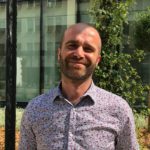Lien vers Pubmed [PMID] – 26466732
Insects 2012 Nov;3(4):1156-70
Habitat modification and fragmentation are considered as some of the factors that drive organism distribution and host use diversification. Indigenous African stem borer pests are thought to have diversified their host ranges to include maize [Zea mays L.] and sorghum [Sorghum bicolor (L.) Moench] in response to their increased availability through extensive cultivation. However, management efforts have been geared towards reducing pest populations in the cultivated fields with few attempts to understand possible evolution of “new” pest species. Recovery and growing persistence of Busseola segeta Bowden on maize (Zea mays L.) in Kakamega called for studies on the role of wild host plants on the invasion of crops by wild borer species. A two-year survey was carried out in a small agricultural landscape along the edge of Kakamega forest (Kenya) to assess host range and population genetic structure of B. segeta. The larvae of B. segeta were found on nine different plant species with the majority occurring on maize and sorghum. Of forty cytochrome b haplotypes identified, twenty-three occurred in both wild and cultivated habitats. The moths appear to fly long distances across the habitats with genetic analyses revealing weak differentiation between hosts in different habitats (FST = 0.016; p = 0.015). However, there was strong evidence of variation in genetic composition between growing seasons in the wild habitat (FST = 0.060; p < 0.001) with emergence or disappearance of haplotypes between habitats. Busseola segeta is an example of a phytophagous insect that utilizes plants with a human induced distribution range, maize, but does not show evidence of host race formation or reduction of gene flow among populations using different hosts. However, B. segeta is capable of becoming an important pest in the area and the current low densities may be attributed to the general low infestation levels and presence of a wide range of alternative hosts in the area.
